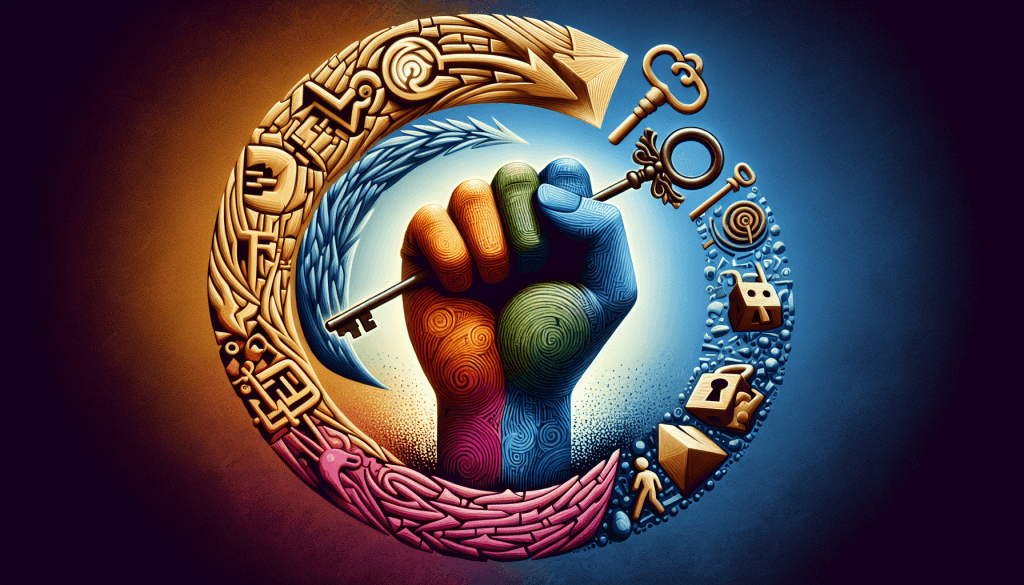Changing defensiveness into a willingness to understand can transform relationships, improve communication, and foster deeper connections. Defensiveness often acts as a wall, blocking meaningful dialogue and creating misunderstandings. But what if we could replace that wall with a bridge? A bridge that leads to empathy, clarity, and mutual respect. This article explores how to recognize defensiveness, understand its roots, and shift toward a mindset of openness and understanding. Let’s dive in.
Key Takeaways
- Defensiveness is a natural reaction but can harm relationships if left unchecked.
- Recognizing defensive patterns is the first step toward change.
- Tools like empathy, active listening, and reframing thoughts can dissolve defensiveness.
- Transforming defensiveness strengthens communication and builds trust.
Introduction to Defensiveness in Communication
Definition of Defensiveness
Defensiveness is a protective reaction to perceived criticism or threat. It often manifests as denial, blame-shifting, or shutting down emotionally. While it’s a natural response, it can hinder honest conversations and create emotional distance.
Imagine someone saying, “Why didn’t you finish the project on time?” If the response is, “Well, you didn’t give me enough information!”—that’s defensiveness in action. It’s a way of shielding oneself from blame or discomfort.
Importance of Addressing Defensiveness in Relationships
Unchecked defensiveness can erode trust and intimacy in relationships. Whether it’s a marriage, friendship, or workplace dynamic, defensive behavior can make others feel unheard or attacked.
Addressing it isn’t just about improving communication—it’s about creating an environment where people feel safe to express themselves. This is especially important when building resilience in relationships, as explored in this guide (source).
Overview of the Benefits of Fostering Understanding
When we replace defensiveness with a willingness to understand, we open the door to healthier interactions. Empathy grows, conflicts are resolved more effectively, and relationships thrive. It’s like switching from a stormy sea to calm waters—everything becomes clearer and more manageable.

Recognizing Defensive Communication Patterns
Common Signs of Defensive Behavior
Defensiveness can show up in many ways, such as:
- Interrupting or talking over someone.
- Blaming others instead of taking responsibility.
- Avoiding the topic or shutting down.
- Using phrases like “It’s not my fault!” or “You always do this!”
These behaviors often stem from a fear of being wrong or judged.
Psychological Reasons Behind Defensiveness
Why do people get defensive? It’s often rooted in insecurity, past experiences, or a fear of vulnerability. For instance, someone who grew up in a critical environment might instinctively defend themselves, even when no attack is present.
Stress and fatigue can also amplify defensiveness. When we’re overwhelmed, our brains are more likely to perceive neutral comments as threats.
How Defensiveness Leads to Misunderstandings
Defensiveness creates a cycle of miscommunication. One person feels unheard, so they push harder to make their point. The other person, feeling attacked, becomes even more defensive. It’s like two people shouting across a canyon—neither can hear the other clearly.
Breaking this cycle requires stepping back and choosing to listen instead of react.

Shifting from Defensiveness to Understanding
The Role of Self-Awareness in Reducing Defensiveness
Self-awareness is the foundation of change. Recognizing when you’re being defensive allows you to pause and reflect. Ask yourself:
- Why am I reacting this way?
- Is this person really attacking me, or am I misinterpreting their words?
Journaling or mindfulness exercises can help build this awareness over time.
Importance of Active Listening in Fostering Understanding
Active listening means fully focusing on what the other person is saying without planning your response. It’s about hearing their words, tone, and emotions.
For example, instead of thinking, “How can I defend myself?” try asking, “What are they really trying to tell me?” This shift can turn a heated argument into a productive conversation.
Strategies for Reframing Defensive Thoughts
Reframing involves changing how you interpret a situation. Instead of thinking, “They’re blaming me,” try, “They’re frustrated and need support.”
This technique, often used in cognitive restructuring (source), helps you respond with empathy instead of defensiveness.

Tools and Techniques to Dissolve Defensiveness
Practicing Empathy and Patience
Empathy is the antidote to defensiveness. By putting yourself in the other person’s shoes, you can better understand their perspective.
Patience is equally important. Change doesn’t happen overnight, and both parties need time to adjust.
Using “I” Statements to Express Feelings
“I” statements focus on your feelings rather than blaming the other person. For example:
- Instead of: “You never listen to me!”
- Try: “I feel unheard when I’m interrupted.”
This approach reduces defensiveness and encourages open dialogue.
Creating a Safe Space for Open Dialogue
A safe space means no judgment, interruptions, or raised voices. It’s a place where both parties can share their thoughts without fear of criticism.
This environment fosters trust and makes it easier to address sensitive topics.

Real-Life Scenarios of Defensiveness and Resolution
Examples of Defensiveness in Personal Relationships
Imagine a couple arguing about household chores. One partner says, “You never help around the house!” The other responds, “Well, you’re always nagging me!”
This defensive exchange escalates the conflict. A better approach would be: “I feel overwhelmed with chores. Can we find a way to share the workload?”
How to Navigate Defensiveness in Professional Settings
In the workplace, defensiveness can hinder teamwork. For instance, if a manager says, “This report has errors,” a defensive response might be, “Well, I didn’t have enough time!”
Instead, try: “I see the errors. I’ll fix them and ensure it doesn’t happen again.” This shows accountability and a willingness to improve.
Lessons Learned from Resolving Defensive Situations
The key takeaway? Defensiveness rarely solves problems. Understanding, on the other hand, builds bridges and strengthens relationships.

Practical Tips for Communicating with a Defensive Person
Avoiding Triggers That Escalate Defensiveness
Certain words or tones can trigger defensiveness. Avoid phrases like “You always…” or “You never…” Instead, focus on specific behaviors and solutions.
Encouraging a Willingness to Understand
Lead by example. Show empathy, ask open-ended questions, and validate their feelings. This encourages them to lower their defenses and engage in meaningful dialogue.
Building Trust Through Consistent Communication
Trust is built over time through honest and respectful communication. By consistently showing understanding, you create a foundation for healthier interactions.

Understanding the Root Causes of Defensive Behavior
Fear of Criticism or Judgment
Many people become defensive because they fear being judged or criticized. This fear often stems from past experiences or low self-esteem.
Past Experiences Influencing Current Reactions
Childhood experiences, such as growing up in a critical household, can shape how we respond to perceived threats. Recognizing these patterns is the first step toward change.
The Impact of Stress and Insecurity on Defensiveness
Stress and insecurity can make even minor comments feel like attacks. Managing stress through techniques like mindfulness or resilience training (source) can reduce defensiveness.
Benefits of Transforming Defensiveness into Understanding
Strengthening Personal and Professional Relationships
When defensiveness is replaced with understanding, relationships flourish. Trust grows, conflicts are resolved faster, and connections deepen.
Enhancing Emotional Intelligence and Communication Skills
Understanding others’ perspectives improves emotional intelligence. This skill is invaluable in both personal and professional settings.
Promoting Healthier and More Meaningful Interactions
Healthy communication leads to meaningful interactions. It’s like planting seeds of kindness and watching them grow into strong, lasting relationships.

Conclusion
Recap of Key Points Discussed
We’ve explored what defensiveness is, why it happens, and how to shift toward understanding. Tools like empathy, active listening, and reframing thoughts can make a world of difference.
Encouragement to Practice Understanding and Empathy
Change takes effort, but the rewards are worth it. By practicing empathy and understanding, we can transform our relationships and ourselves.
Final Thoughts on the Importance of Overcoming Defensiveness
Defensiveness may feel like a shield, but it often isolates us. Understanding, on the other hand, connects us. So, let’s choose connection over conflict and build bridges instead of walls.
By embracing these strategies, anyone can turn defensiveness into a willingness to understand, paving the way for stronger, healthier relationships.
FAQ: Transforming Defensiveness Into a Willingness to Understand – A Path to Better Communication
What does it mean to change defensiveness into a willingness to understand?
It involves shifting from a mindset of self-protection and resistance to one of openness and curiosity. Instead of reacting defensively to perceived criticism, you actively seek to understand the other person’s perspective, fostering healthier and more productive communication.
Why do people become defensive in conversations?
Defensiveness often stems from feeling attacked, misunderstood, or vulnerable. It can also arise from past experiences, fear of criticism, or a desire to protect one’s self-esteem. Recognizing these triggers is the first step toward addressing them.
How can I recognize when I’m being defensive?
Signs of defensiveness include interrupting, justifying your actions, shifting blame, or shutting down emotionally. Pay attention to your body language, tone of voice, and inner feelings of frustration or anxiety during conversations.
What are some strategies to reduce defensiveness in myself?
Practice active listening, take deep breaths to stay calm, and focus on the other person’s words without immediately formulating a response. Reflect on your triggers and remind yourself that understanding does not mean agreeing.
How can I encourage someone else to move past defensiveness?
Approach the conversation with empathy and a non-judgmental tone. Use ‘I’ statements to express your feelings and avoid blaming language. Creating a safe environment can help the other person feel less threatened and more open to dialogue.
What role does empathy play in fostering understanding?
Empathy allows you to step into the other person’s shoes and see things from their perspective. This not only reduces tension but also builds trust and mutual respect, paving the way for more meaningful conversations.
Can changing defensiveness improve relationships?
Yes, reducing defensiveness can lead to healthier, more open communication, which strengthens relationships. It helps resolve conflicts more effectively and fosters a deeper connection between individuals.
Are there any techniques to practice willingness to understand?
Techniques include mindfulness exercises to stay present, journaling to reflect on your reactions, and role-playing scenarios to practice empathetic responses. Over time, these habits can help you approach conversations with greater openness.
What should I do if I feel defensive but want to stay open?
Pause and take a moment to breathe before responding. Acknowledge your feelings internally and remind yourself of your goal to understand the other person. This can help you regain composure and respond thoughtfully.
Is it possible to completely eliminate defensiveness?
While it may not be possible to eliminate defensiveness entirely, you can significantly reduce its impact by becoming more self-aware and practicing strategies to stay open. It’s a continuous process of growth and self-improvement.



